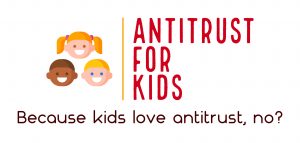Author: Steven Cernak
Recently, the Federal Trade Commission proposed a nearly complete ban on noncompete provisions in employment agreements. Because it faces the usual lengthy rulemaking process and several expected legal challenges, the proposed rule might not become effective for months, if ever. Through the proposal and attendant publicity, however, the FTC already has drastically changed how such provisions will be used.
Noncompete Basics and the Law Today
Noncompetes prevent workers from leaving an employer to work for other employers, typically competitors. The clauses usually are limited in time and geography. So, for example, a worker is prohibited from working for specific other employers — say, competitors — in a particular geographic area — say, Michigan — for a limited period of time — say, six months after leaving the first employer. Through these clauses, employers hope to better protect their secrets and avoid training a worker for a competitor. For example, a nondisclosure agreement might not adequately prevent use of the first employer’s competitive details that are embedded in the worker’s brain.
Today, such provisions are usually evaluated under state common or statutory law. A handful of states ban them. A few statutorily limit their use to high salary workers. Most try to balance the interests of the employer with those of the worker trying to earn a living in a chosen field. Such provisions are more likely to be upheld if the interests of the employer are legitimate and the restrictions on the worker’s mobility are limited.
FTC Proposed Rule
On January 5, 2023, the FTC proposed a rule that would upend that status quo developed over hundreds of years, declaring nearly all noncompetes as an “unfair method of competition” under the FTC Act, and outlawing nearly all of them. The proposal would allow some noncompetes in the sale of a business and sought comment on partially exempting noncompetes for high salary workers. The proposal would prohibit parties from entering new noncompete provisions and employers from enforcing existing ones. Also, all state laws that were not as restrictive would be pre-empted. The FTC is seeking comment on the proposal through March 10.
Reaction was quick. The proposal at regulations.gov generated thousands of official comments, mostly positive, in the first couple weeks. Negative commentary in the media took several angles. First, some renewed arguments that the FTC does not have the authority to issue rules under its “unfair methods of competition authority.” Others questioned whether the FTC has the authority under recent Supreme Court precedent to answer, without explicit Congressional direction, such a “major question” that has generated thousands of opinions and state laws over hundreds of years.
Finally, even granting that the FTC has the authority for such a rule, some argued that the FTC’s 200+ page notice did not adequately support the wisdom of departing from the typical case-by-case evaluation because other analyses found the overall effect of such noncompetes to be mixed. The FTC will need to consider all the official comments and decide if any tweaks to the proposed rule are appropriates. Unless the rule drastically changes, legal challenges seem certain. Therefore, a ban on nearly all noncompete provisions might not be effective for many months, if ever.
 The Antitrust Attorney Blog
The Antitrust Attorney Blog











